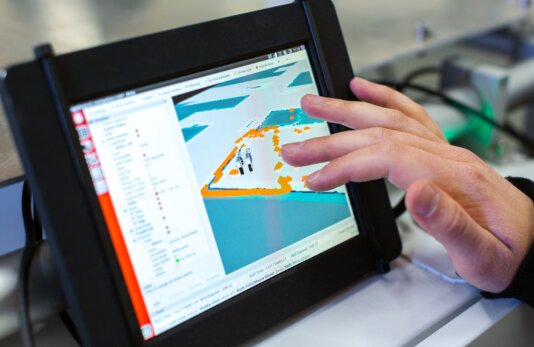- About
- Topics
- Story
- In-Depth
- Picks
- Opinion
- News
- Donate
- Signup for our newsletterOur Editors' Best Picks.Send
Read, Debate: Engage.
| topic: | Sustainable Agriculture |
|---|---|
| tags: | #food security, #climate action, #Sustainable Agriculture, #COP28 |
| located: | Morocco, USA, United Arab Emirates, Kenya, Rwanda, Nigeria |
| by: | Claudia Sadoff |
The urgency of the climate crisis is growing every year, with increasingly severe consequences for global food security.
Last year’s UN COP27 climate talks saw long overdue recognition of the importance of agriculture and food systems, which must contend with increasingly extreme conditions to nourish a rising population while shifting to sustainable, low-carbon production as quickly as possible.
The hard work of acting upon the pledges made during the climate talks takes place in the months between COPs, supported by bridging initiatives like the Agriculture Innovation Mission for Climate (AIM4C), and the Breakthrough Agenda, launched by a coalition of 45 world leaders at COP26.
These international efforts focus attention on deploying and accelerating practical, proven solutions to both reduce agricultural emissions and bolster food security in countries on the frontline of the climate crisis.
This year’s AIM for Climate Summit in Washington, DC can therefore start the countdown for an even more food-focused COP28 that continues to leverage the enormous opportunities created by agricultural innovation both to rein in climate change and support greater resilience against climate extremes.
Reforming global food systems to be simultaneously highly productive and sustainable, climate resilient and low-emitting is no simple task. But the good news is that breakthroughs that make such an ambitious transformation possible exist and are ready to be scaled up and out.
By accelerating the widescale adoption of improved farming practices and new technology, the food and agriculture sector can reduce its emissions by an estimated 20 percent and become a net sink for carbon by 2050, while also equipping farmers to cope with new climate extremes.
The challenge before the global community is to urgently find effective ways to get the most appropriate, locally-adapted solutions into the hands of farmers around the world as quickly as possible.
When it comes to reducing agricultural emissions, a vast suite of turnkey innovations covers the full spectrum of food systems, from planting to processing.
For example, scaling up the use of green manure crops and cover crops that provide organic compost, particularly in countries with degraded soils like those in Morocco, can reduce the need for fertilizer, which is responsible for as much as five percent of global greenhouse gas emissions. New rice varieties and cultivation practices that require up to 50 percent less water produce lower levels of methane, and solar-powered irrigation systems eliminate the need for diesel-powered pumps.
Meanwhile, seaweed supplements have been shown to reduce methane emissions in cattle by 80 percent, a significant reduction given livestock worldwide generate an estimated five percent of global greenhouse gas emissions and 30 percent of global methane.
Further along the value chain, CGIAR scientists are already seeing how simple methods, such as providing better storage for harvested crops in Rwanda and rolling out reusable plastic containers for tomato traders in Nigeria, can reduce food loss and waste, which represents half of global food systems emissions.
Equally important are the innovations that can equip farmers to deal with the consequences of climate change, particularly those in the Global South, who are most affected yet least responsible. These range from very low-tech to the cutting edge of biotechnology and AI.
Breakthroughs in genomics, for instance, have allowed scientists to accelerate breeding processes and develop varieties of both crops and livestock that are better suited to new climates, from drought-resilient durum wheat and barley to the cross-bred Galla goat, which copes with higher temperatures in East Africa.
Even technology that many around the world now take for granted, such as weather apps and forecasts, can help give smallholder farmers a fighting chance against increasingly unpredictable conditions if governments and development partners can close the digital divide.
And the biofortification of staple cereals with additional nutrients will become more important to deliver nutritious diets as climate change starts to reduce the nutritional value of the food we grow.
Emerging and existing breakthroughs already making a difference should inspire hope that agricultural innovation can keep climate change in check now the enormous potential has been recognised. What is needed now is a united effort across governments and development partners to double down on adapting, deploying and scaling science-led innovations and policies.
With continued collaboration to leverage agricultural solutions, we can arrive at COP28 ready to feed climate action - and the world.
Claudia Sadoff is the executive managing director at CGIAR the world’s largest publicly funded agricultural research network.
Image by ThisisEngineering RAEng.
